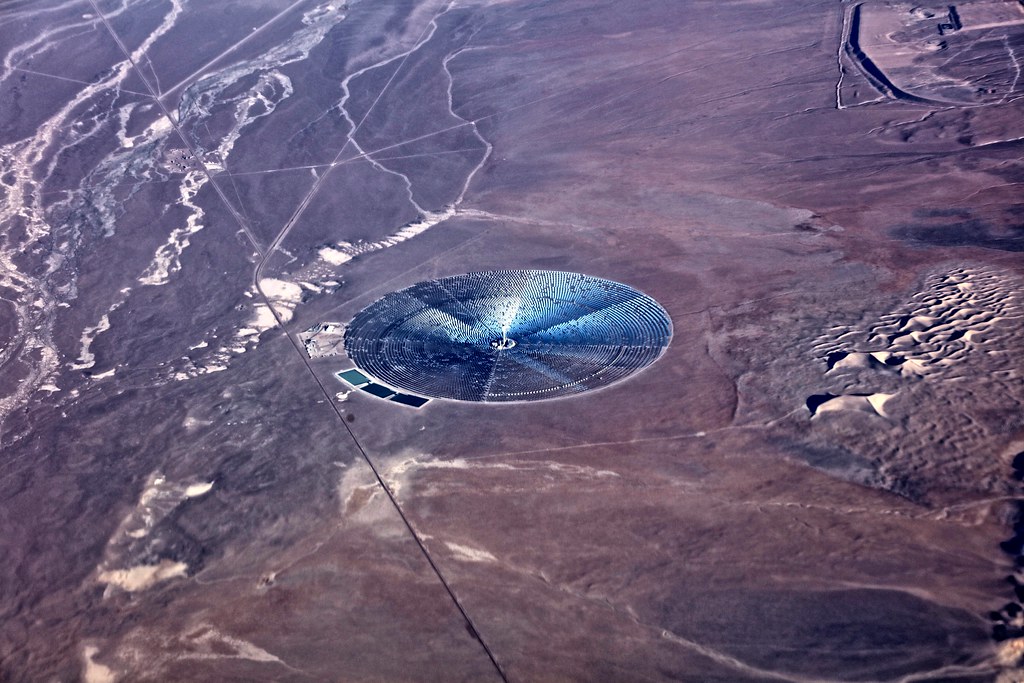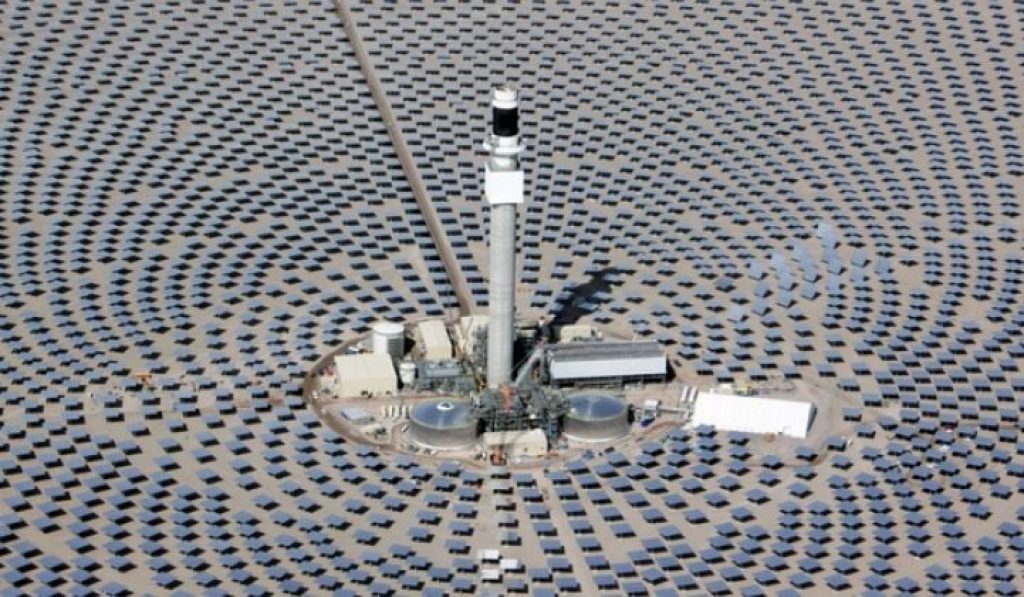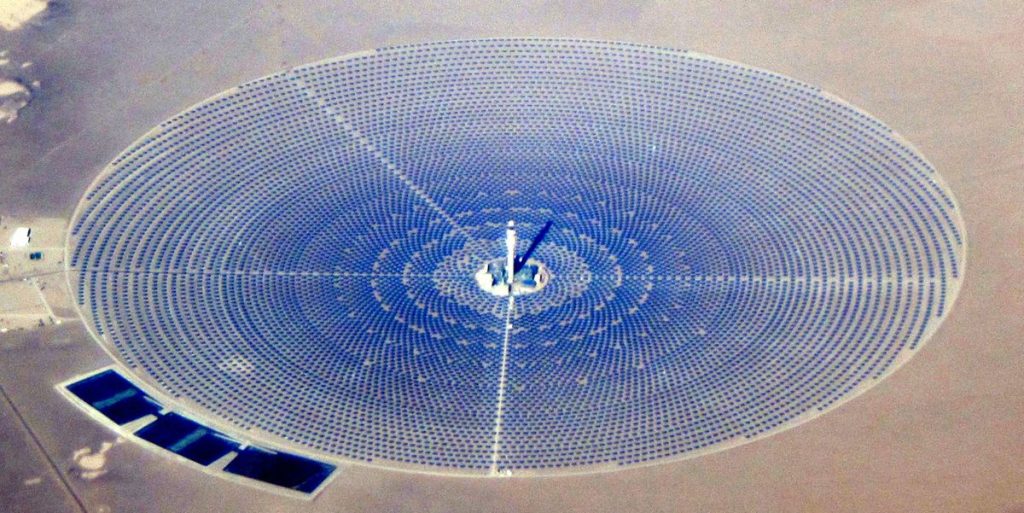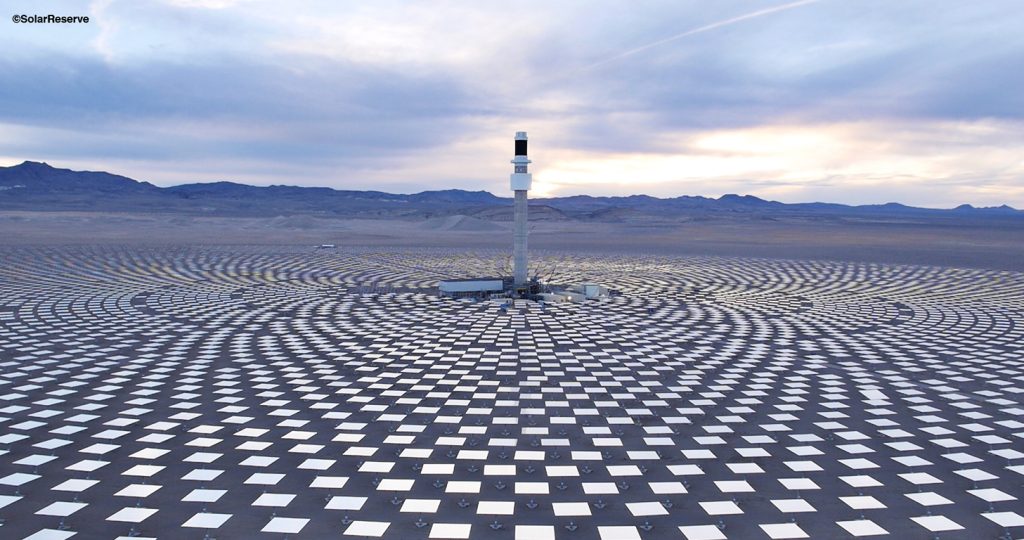
The Crescent Dunes Solar Energy Project is making history as the world’s largest concentrated solar power facility. Located on the edge of Nevada’s Black Rock Desert, it is the first of its kind to feature a molten salt power tower design. This revolutionary design allows the facility to store energy from the sun and use it to generate energy even when the sun is not shining. The project is helping to usher in a new wave of renewable energy that is both clean and consistent. Not only does the project provide clean energy to the surrounding area, but it is also helping to reduce emissions that are damaging to the environment. By harnessing the power of the sun, the Crescent Dunes Solar Energy Project is setting an example for the rest of the world and showing that renewable energy is a viable and sustainable energy source.
Overview of Crescent Dunes Solar Energy Project
Crescent Dunes Solar Energy Project is the world’s largest solar energy facility, built on the edge of the Black Rock Desert in Nevada. The project was developed by Solar Reserve, who also built the facility. The project utilizes a unique molten salt technology to store the sun’s energy and generate power even when the sun isn’t shining. The facility has a nameplate capacity of 110 MW. It is expected to generate 1,000,000 MWh of electricity per year. The project has been in development since 2012 and has experienced multiple delays. Construction of the project began in 2016 and is expected to be completed in the first half of 2019. The facility is expected to be fully operational by 2021. The project received $737 million in loan guarantees from the U.S. Department of Energy in 2013.

The Benefits of Renewable Energy
Renewable energy is the fastest-growing source of electricity in the U.S. Solar and wind are the two most common sources of renewable energy. Solar energy has long been recognized as a promising source of renewable energy because of the huge amounts of sunlight that hit the earth each day. The sun’s energy can be converted into electricity by focusing it with mirrors or panels and using it to power homes and businesses. Clean energy like solar power is essential to avoid the harmful impacts of climate change and pollution. Renewable energy also has economic benefits. The growing industry employs thousands of people and is helping to reduce America’s dependence on foreign energy sources.

The Technology Behind Crescent Dunes
The Crescent Dunes Solar Energy Project uses the same basic technology as other large-scale solar power plants. But it does have a few key differences. The plant uses 10,000 square feet of mirrors to focus sunlight on a single point. This creates intense heat that generates electricity. The molten salt technology used in the Crescent Dunes facility is different from the panels used at most other plants. At Crescent Dunes, salt is used to store the energy from the sun so it can be used to generate electricity when needed. The salt is heated to more than 2,900 degrees Fahrenheit. But instead of generating electricity at that temperature, the salt is allowed to cool and then stored in tanks. When energy is needed on the grid, the molten salt is reheated to generate electricity again.

The Impact of Crescent Dunes on the Environment
The Crescent Dunes Solar Energy Project is a net zero energy facility. This means that it produces as much energy as it consumes, and any energy that is not needed is shuttled into the power grid for other use. This means that the facility does not produce any emissions that are harmful to the environment. While the project does take up a significant amount of space (more than 10 square miles of land), no additional land is needed for the facility to operate. Additionally, the facility does not have any moving parts that could fail over time, reducing maintenance costs and increasing the project’s lifespan.
The Impact of Crescent Dunes on the Local Economy
The Crescent Dunes Solar Energy Project will employ more than 1,100 workers during the construction phase and create another 100 jobs during the operation phase. These jobs are well-paying, averaging more than $100,000 per year. The project is also expected to contribute more than $50 million to the local economy each year through taxes and the purchase of goods and services. The project also brought in $737 million in loan guarantees from the U.S. Department of Energy. These funds have been used to finance the construction of the facility and are expected to be repaid over time by the facility owner.
The Future of Renewable Energy
Solar energy has become increasingly popular as the technology has improved and the price of solar panels has decreased. Solar energy is now one of the fastest-growing sources of electricity in the U.S. as more people install solar panels or other types of solar energy systems on their homes and businesses. Wind turbines have also grown in popularity as a source of renewable energy. These large structures are placed offshore and use the wind to generate electricity. While solar and wind are the two most common sources of renewable energy, there are many other forms of clean energy being explored. Hydropower, which uses the flow of water to generate electricity, is another common source of renewable energy. Geothermal energy is another source of renewable energy that uses the heat from the earth to generate electricity. There is also research being done on how to use other sources of energy generated by the sun, such as solar plants in space.
Crescent Dunes Solar Energy Project: A Model for the Future?
The Crescent Dunes Solar Energy Project is the first-of-its-kind molten salt technology that enables the facility to generate energy when the sun isn’t shining. This concept could prove to be an important development in the world of renewable energy, setting a model for future projects. While solar energy has proven to be a promising source of renewable energy, it does have some limitations. Solar energy can only be produced during daylight hours and requires clear skies. This means that solar energy production can vary throughout the day, making it unreliable as a consistent source of electricity. The molten salt technology behind Crescent Dunes could help address some of these issues and make solar energy a more reliable source of renewable energy.
Conclusion
The Crescent Dunes Solar Energy Project will be the first project of its kind to feature a molten salt power tower design. This revolutionary design will allow the facility to store the sun’s energy and use it to generate power even when the sun is not shining. The project is helping to usher in a new wave of renewable energy that is both clean and consistent. Not only does the project provide clean energy to the surrounding area, but it is also helping to reduce emissions that are damaging to the environment. By harnessing the power of the sun, the Crescent Dunes Solar Energy Project is setting an example for the rest of the world and showing that renewable energy is a viable and sustainable energy source.






